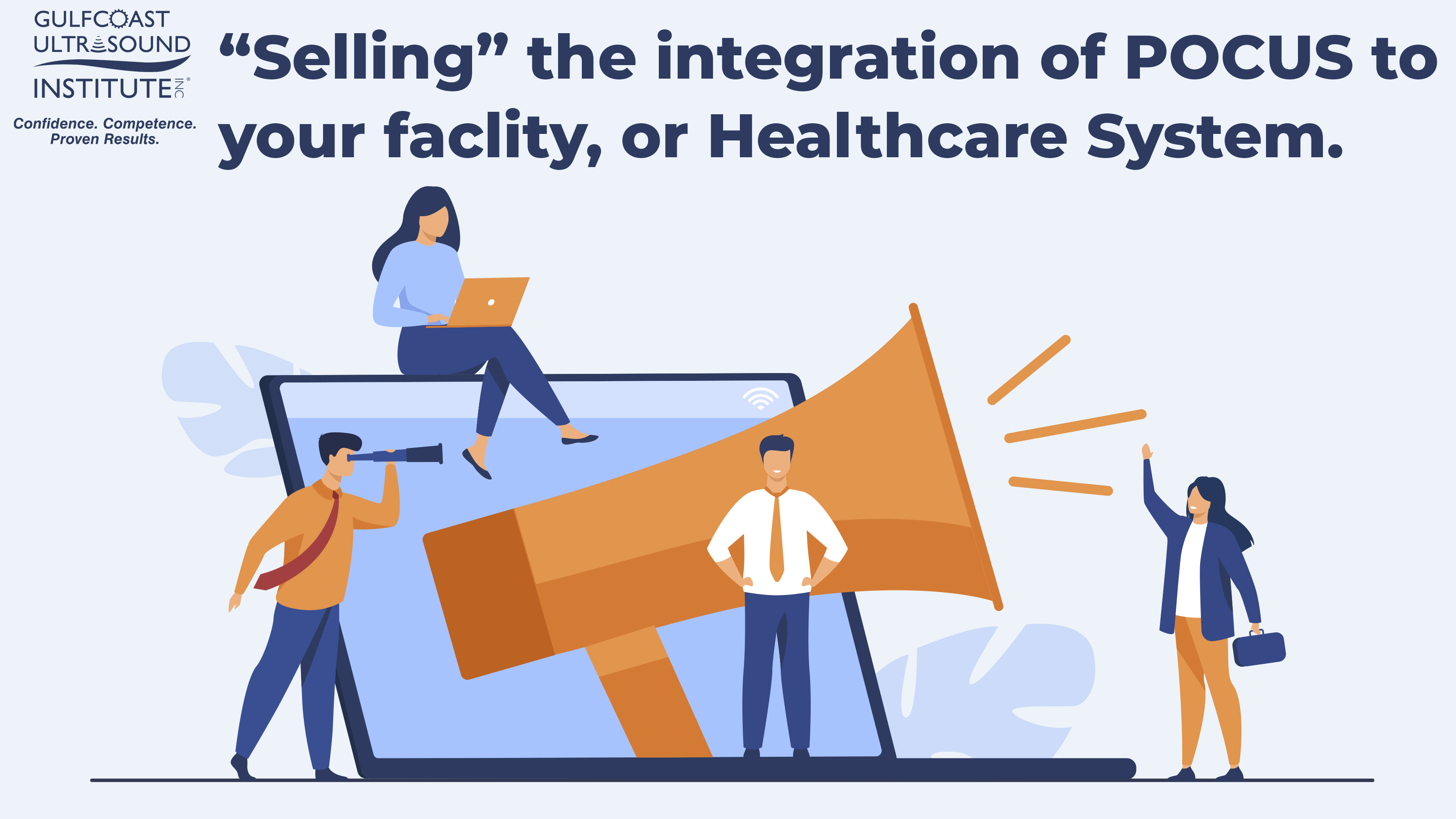Integrating Point-of-Care Ultrasound (POCUS) is a proven diagnostic tool that provides precise, cost-effective, and non-invasive diagnostic information to clinicians. The benefits are numerous while the learning curve is relatively small. POCUS is gaining momentum, becoming a widely recognized tool for clinicians and healthcare providers.
Even with its increasing utilization, some clinicians spend resources, time and effort to hone their ultrasound skills only to find they are having difficulty obtaining privileging through their organization’s credentialing committee. This can be due to the committees’ lack of experience privileging for POCUS, there is no precedence for the POCUS program, or there is opposition from another department who views the utilization of POCUS as a threat.
Let’s review some of the benefits of POCUS that you can use to support this program is essential for improved patient care and outcomes.
Patient Safety
There are numerous studies demonstrating the safety benefits to utilizing bedside ultrasound to perform procedures. In 2001, the Agency for Healthcare Research & Quality Guidelines recommended the use of ultrasound guidance for the placement of CVCs as one of the top 11 evidence-based practices that healthcare providers can use to improve patient care and patient safety. Using ultrasound guidance has allowed many hospitals to drastically reduce the incidence of iatrogenic pneumothoraces.
Patient Satisfaction
HCAHPS scores directly impact reimbursement rates because facilities with low HCAHPS scores receive limited funding from Medicare. POCUS has the potential to not only expedite care and diagnosis, but also to maximize satisfaction scores and improve the patient-physician relationship. Howard et al found that patients who had a bedside US had statistically higher satisfaction scores and an improved perception of the skill and ability of the clinician.
It was also found that utilizing POCUS to evaluate certain medical conditions decreased the length of stay in the ED, another BIG patient satisfier. Zanobetti et al. found that patients with dyspnea who had a bedside US had an average length of stay of 24 minutes, compared to 186 minutes without utilization of POCUS.
Increased Revenue
A robust POCUS program conserves resources and reduces diagnostic costs. 2009 Medicare data showed that if ultrasound was substituted for CT in 70% of renal colic diagnoses, the savings to medicare would have been more than $50 million. POCUS can also generate revenue, which will certainly perk the ears of your facilities administrators. Regardless of the practice setting, POCUS studies are billed utilizing CPT codes just like any other diagnostic exam or procedures. A busy ED with 70,000 visits can easily generate $350,000 annually through the integration of POCUS.
There has never been a better time to implement POCUS in your clinical practice and you may be in a position to lead that change within your facility or healthcare system. Having the facts and information to help gain your facilities support is critical. The research and data is there, now you just have to open the lines of communication to share this information with those making the decisions to help advance the care and outcome for the patients and communities you serve.
For additional resources and educational opportunities for POCUS, visit our website by clicking the button.
References:
AHRQ
Researchgate
Pubmed
(727)363-4500
|
CREATE ACCOUNT
|
LOG IN
|
CART
|
Item(s) added to cart
Proceed to Checkout
Continue Shopping



